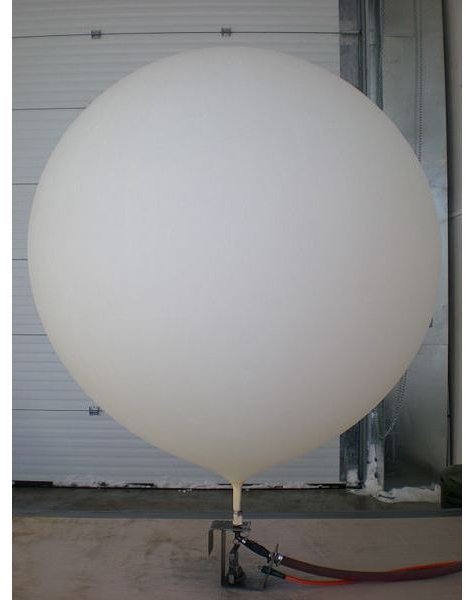How Weather Balloons are Used to Study Weather
What are Weather Balloons
How are balloons used to study weather? When we hear the word “balloon,” the image of an object floating in the air comes to mind. This property makes them suitable to conduct atmospheric and weather observations. Weather balloons are instruments that are used to gather information about weather and atmosphere. Weather balloons are made of latex or synthetic elastic material. These are filled with a gas lighter than air such as hydrogen or helium which helps them to float. The average diameter of inflated balloon is around 6 ft. When the balloon rises high in the atmosphere the diameter increases up to three times or even more before bursting. These balloons go as high as 90,000 ft. depending upon the amount of gas filled in it. The instruments, like sensors attached to it, measure the various atmospheric parameters like ambient temperature, atmospheric pressure, humidity, ozone levels, CO2 levels, etc and send them to the earth stations with the help of transponders. They are also known as sounding balloons as they are taking the sounding of the atmosphere. All over the world meteorological departments are using weather balloons to get the atmospheric information.
How Weather Balloons are Used to Study Weather
English Physician John Jefferies was the first one to use hot air balloon for measuring atmospheric properties like temperature, atmospheric pressure and humidity. In that balloon basket he carried thermometer, barometer and hygrometer with him. Explorer II was considered the first helium balloon launched by National Geographic Society in 1935 to study the atmosphere. Weather Balloon has a very important application in weather and atmosphere observation. Instruments like sensors and radio transmitters collectively known as radiosonde are tied to these balloons to measure the ambient temperature, atmospheric pressure, humidity, wind speed and directions as well as ozone and carbon dioxide levels and then send this atmospheric information or data to the earth station. The radiosonde are designed for multiple purposes. The radiosonde collects the weather information while ascending and simultaneously transmits the collected information to the fixed earth station receiver.
When the weather balloon goes up in the atmosphere it starts expanding because of the thinning of atmosphere and when it attains certain altitude it bursts. The radiosonde attached to it starts descending with the help of parachute. If the GPS device of radio tracking antenna is attached to it, it can be easily tracked and recovered back. Even if the radiosonde or any other instrument attached to the balloon is lost, there will be no loss of information as the information is continuously transmitted when the balloon is ascending.
Use of weather balloon in weather study is a very cost effective way to collect the weather information. Weather stations release weather balloons as frequently as twice a day to collect more and more meteorological data. With the help of this data bank, more accurate weather forecasting can be done and weather trends can be found out.
Weather Balloon
Image credit
Fully Inflated Weather Balloon: https://commons.wikimedia.org/wiki/File:Balloon_fully_inflated.jpg
